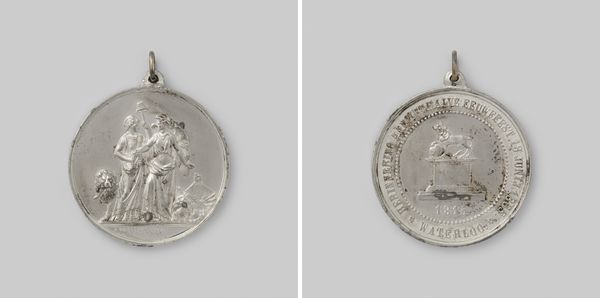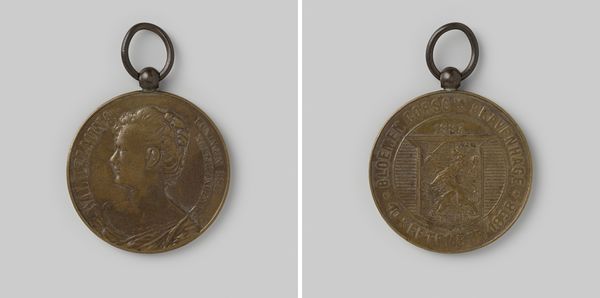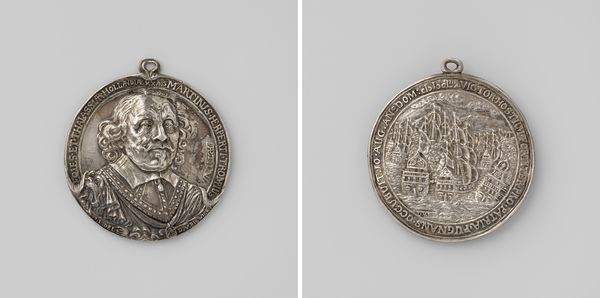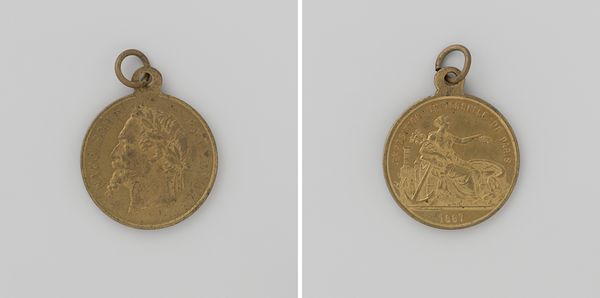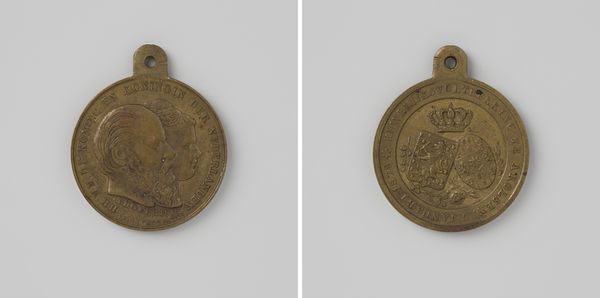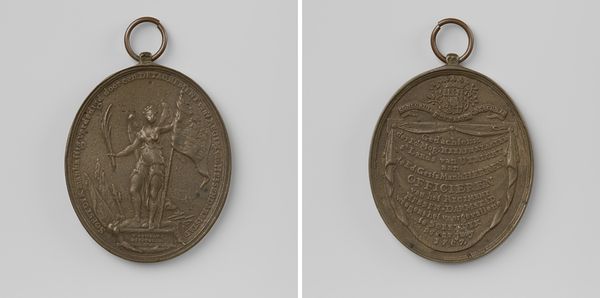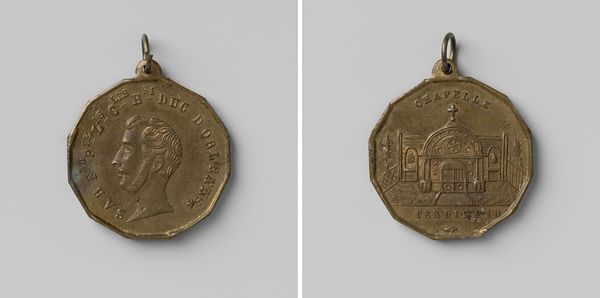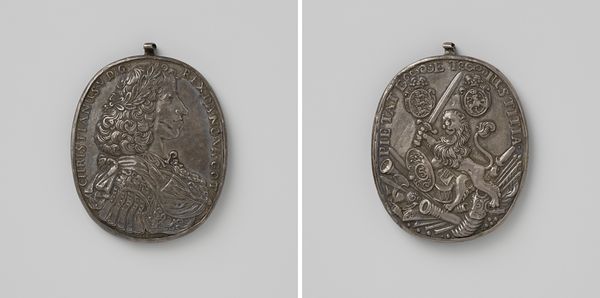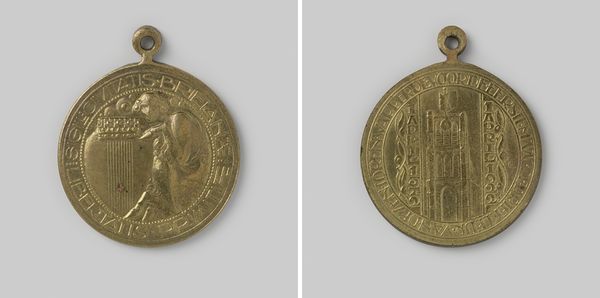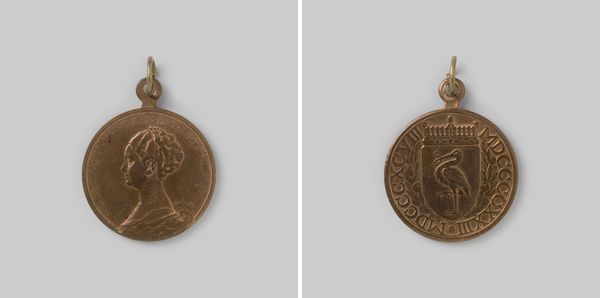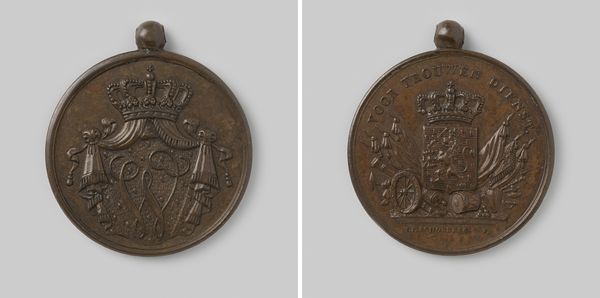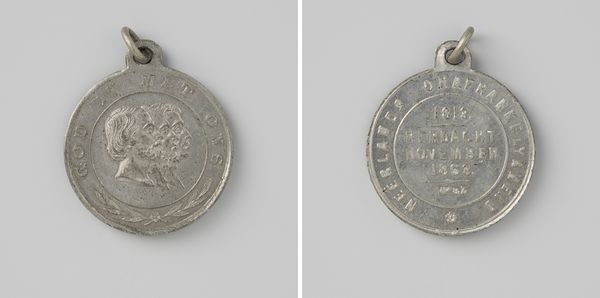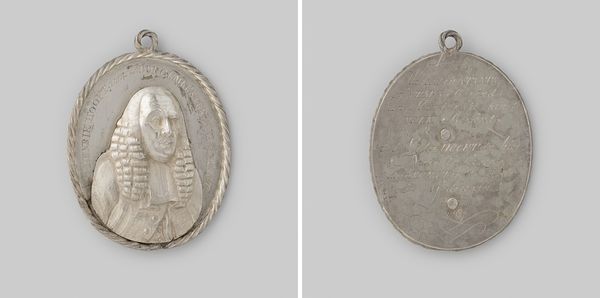
print, metal, relief, sculpture
#
portrait
#
narrative-art
#
dutch-golden-age
# print
#
metal
#
relief
#
sculpture
#
history-painting
Dimensions: width 4.0 cm, height 4.4 cm, weight 21.39 gr
Copyright: Rijks Museum: Open Domain
Curator: What immediately strikes me about this metal relief is its incredible detail. The delicate lines and subtle gradations of light give it a captivating presence. Editor: Indeed, there is a compelling formality to it, isn't there? What we have here is a commemorative medal, created in 1872 by Salomon de Vries, honoring the capture of Brielle. This event, taking place on April 1, 1572, holds significant historical weight as the first major rebel victory against Spanish rule, a pivotal moment in the Dutch Revolt. Curator: So it’s a celebration of resistance, then, cast in metal to preserve its legacy. I notice on the front of the medal a female figure placing a helmet atop another woman’s head, positioned near a lion's head—perhaps representing bravery. This feels deeply allegorical and gendered in its depiction of power and victory. Editor: The symbolism is indeed quite layered. It serves to memorialize the actions while imbuing them with values—in this instance, freedom. On the reverse side, the Dutch coat of arms, surmounted by a crown, signifies the restored authority, with the date "1572" etched to mark the historical moment. The phrase surrounding the coat of arms, “EERSTE EEUW GEDACHTENIS DER INNEMING VAN BRIELLE,” clearly states its commemorative intention. Curator: And to think about the accessibility of an object like this. The Dutch Revolt wasn’t just about land, it was about creating a sense of identity and access to shared historical memories. This piece becomes an emblem to keep those narratives circulating through different communities. What does it mean to own a little piece of your country's resistance? Editor: It highlights a collective endeavor while inviting us to think about what resistance signifies today. In a material sense, the artist carefully controls line and tone, resulting in both an attractive formal image and one weighted with cultural significance. The relief technique gives a tangible form to intangible ideas like resistance. Curator: So the intrinsic beauty becomes intertwined with this specific narrative. Thinking about these metal works also reminds me of broader questions surrounding commemoration, agency, and national narratives. I wonder, whose story of resistance is being preserved in the formalization of the historical telling and why this one was selected in the later 19th century? Editor: Food for thought! And that's a perfect place for us to end our chat today. Thanks!
Comments
No comments
Be the first to comment and join the conversation on the ultimate creative platform.
